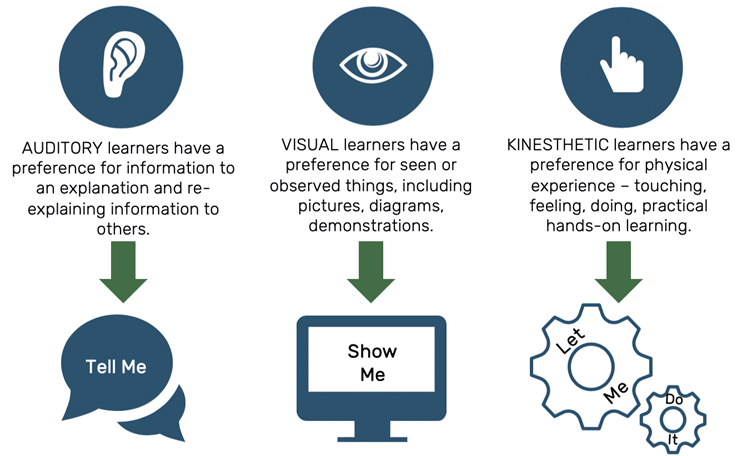Learning styles acknowledge that not everyone prefers to learn a certain way. There are a number of theories and models that aim to categorize learners depending on their preferred style of learning. Let’s take a look at one of the most prominent models – the VAK learning styles model.

IMAGE: UNSPLASH
VAK Learning Styles Model
Walter Burke Barbe’s Visual, Auditory, Kinaesthetic (VAK) learning styles model suggests that most people prefer to take in and process information though one of the following learning styles:
- Auditory learners are those in the group that are constantly asking questions. They prefer to learn through discussion, debate, group work, podcasts, and spoken instruction. They’ll often say “Can you talk me through…” or “Tell me how…”.
- Visual learners are those in the group that draw labeled diagrams and want to see pictures of the concept. They create a mental picture of what the content is describing and prefer to learn through observation, diagrams, photos, videos, charts, and demonstrations. They’ll often say “Show me how…”.
- Kinaesthetic learners are those in the group that dive straight in without reading the instructions! They prefer to learn through hands-on experiences – by touching, feeling, experimenting, simulations, and through trial and error. They’ll often say “Let me do it.”
What Does This Mean For Instructional Design?
Learning design and materials development needs to appeal to a variety of learning styles and mixture of learning preferences. Instructional Design Australia use learning styles to inform instructional decisions that cater for all learners’ preferences to have a greater impact on individuals’ learning.
We often implement the ‘Tell me, Show me, Let me do it’ model to teach to each preference. Begin by explaining the task. Next, draw diagrams and demonstrate how to perform the task. Finally, allow learners to do the task for themselves.
The ‘Tell me, Show me, Let me do it’ model caters for each learning style – the ‘Tell me’ being auditory, ‘Show me’ being visual and ‘Let me do it’ being kinaesthetic. It also provides a scaffolded approach to move students progressively towards stronger understanding and skills
Just to be clear, the VAK learning styles does not mean that an individual cannot learn from all three styles, it simply means that individuals have e preference or strength for a particular way of learning. Whilst VAK is not the be all and end all of learning design, Instructional Designers should critically review their program design to ensure that it offers a combination of engaging activities to cater for how learners make meaning from new information.
If you are interested in even more design-related articles and information from us here at Bit Rebels, then we have a lot to choose from.


COMMENTS